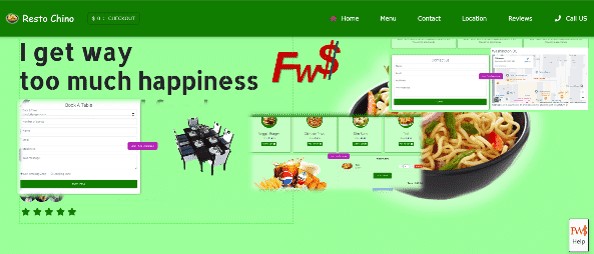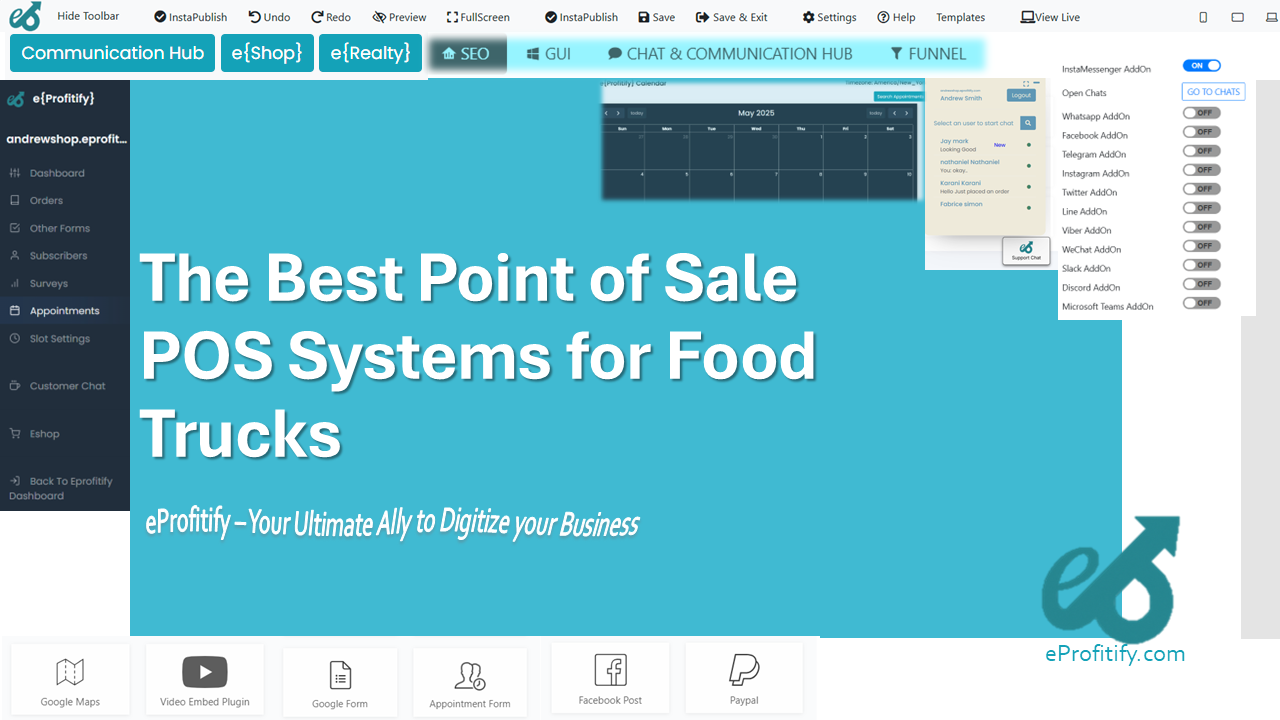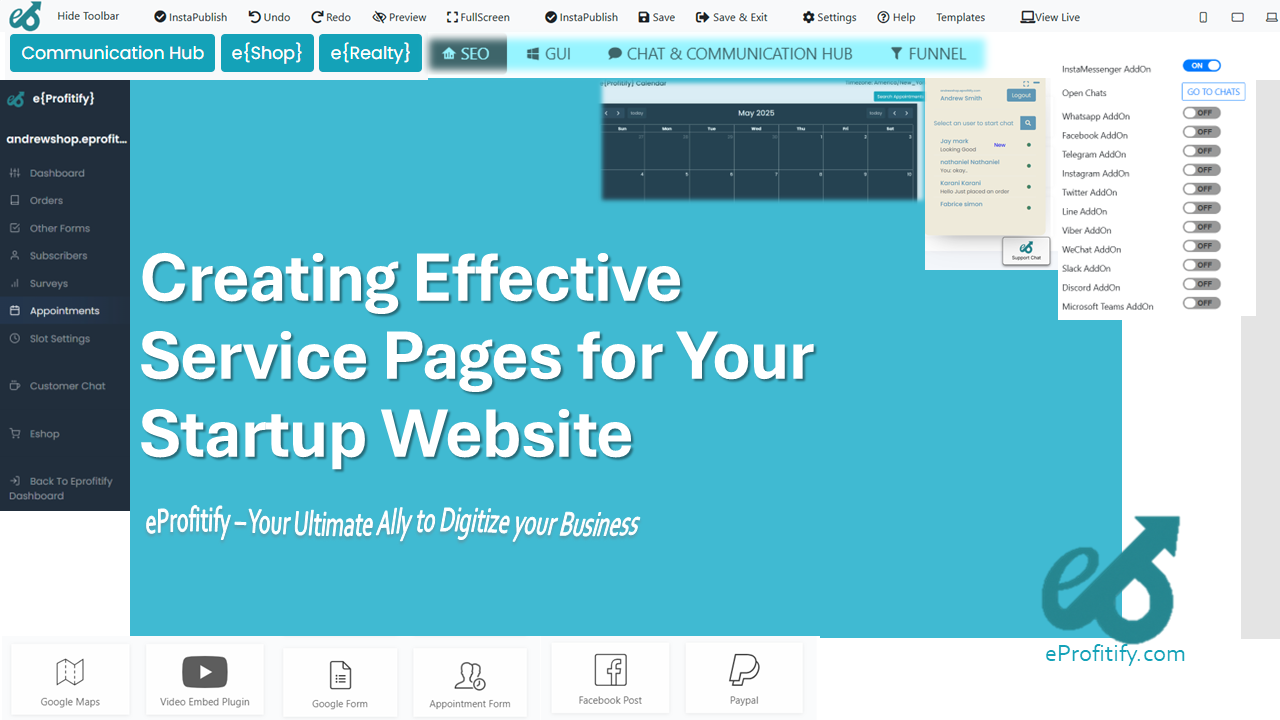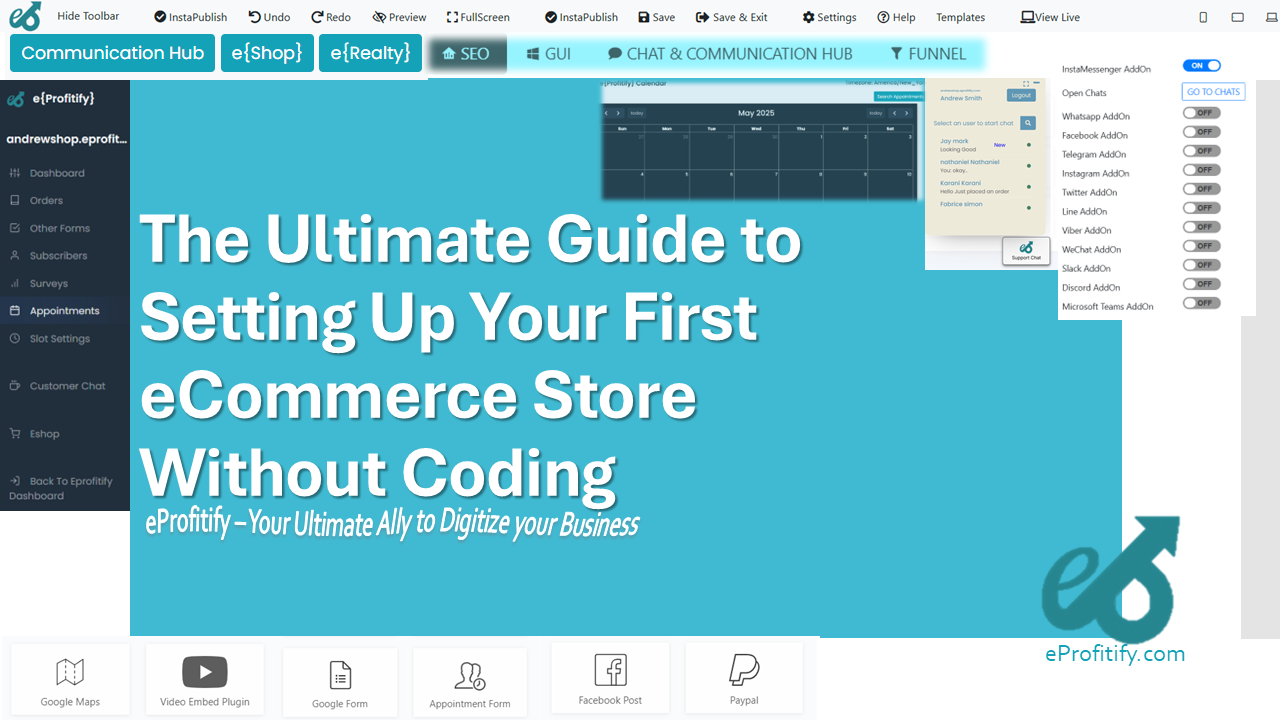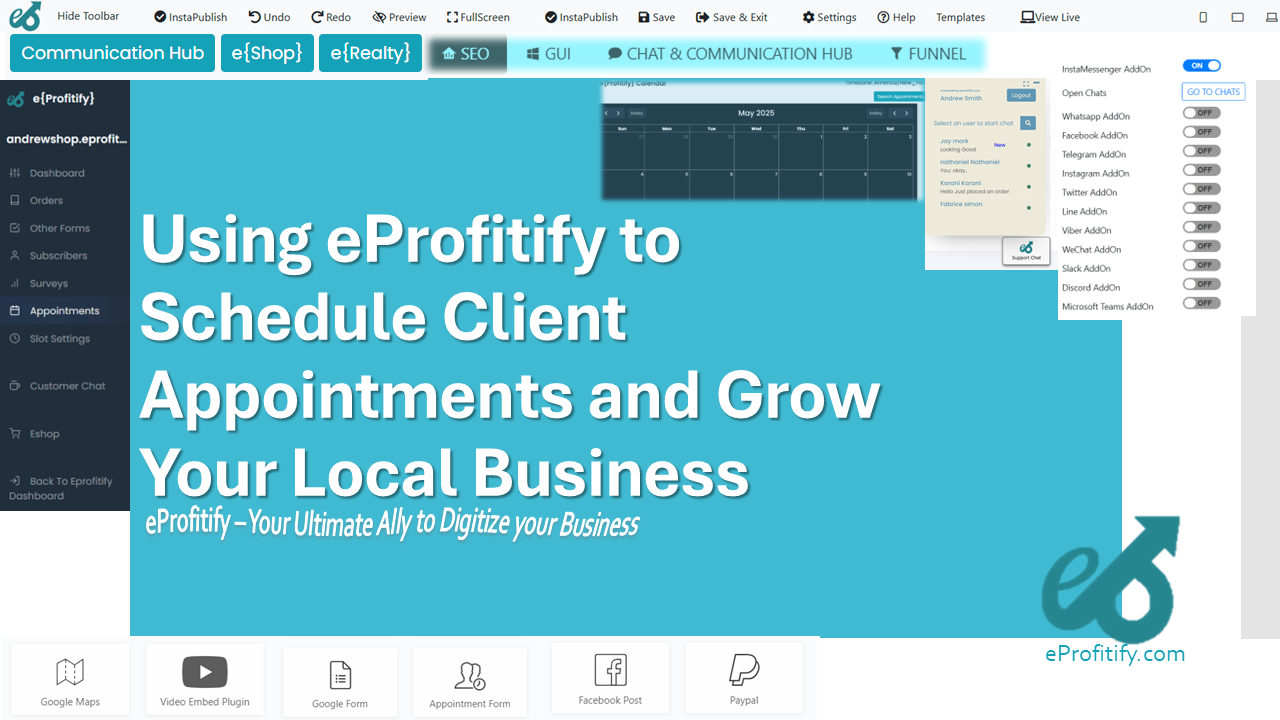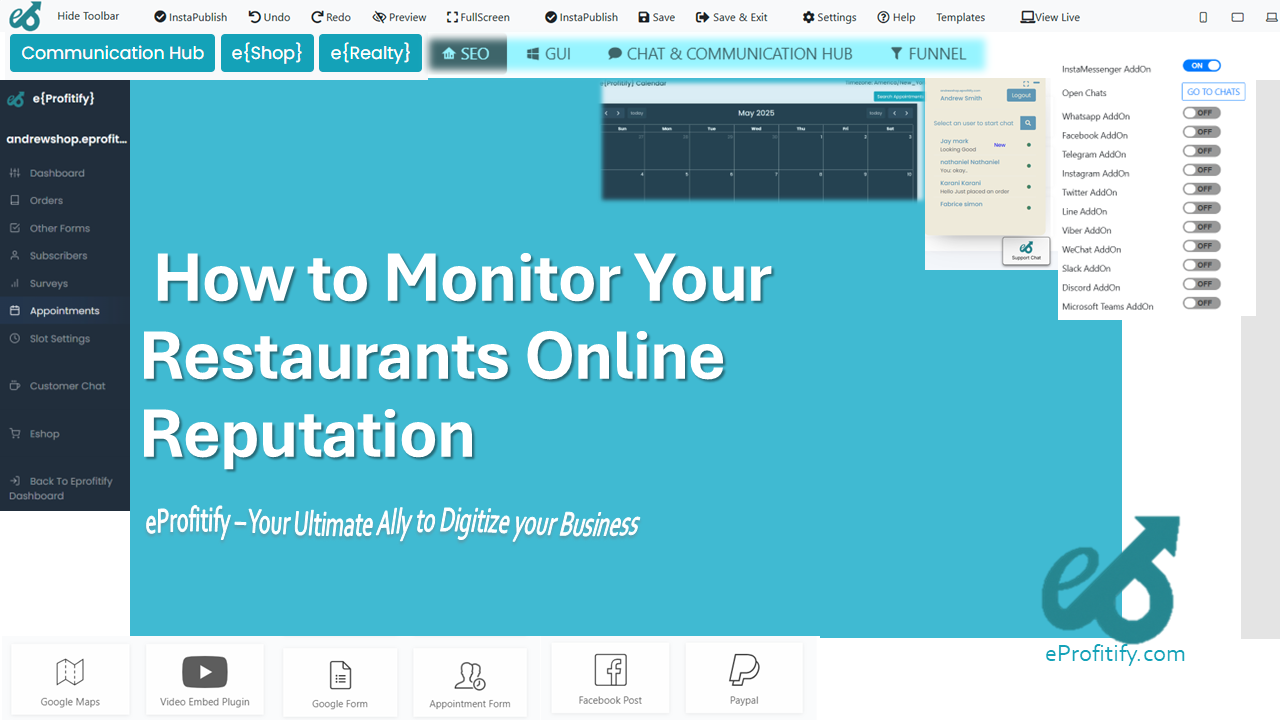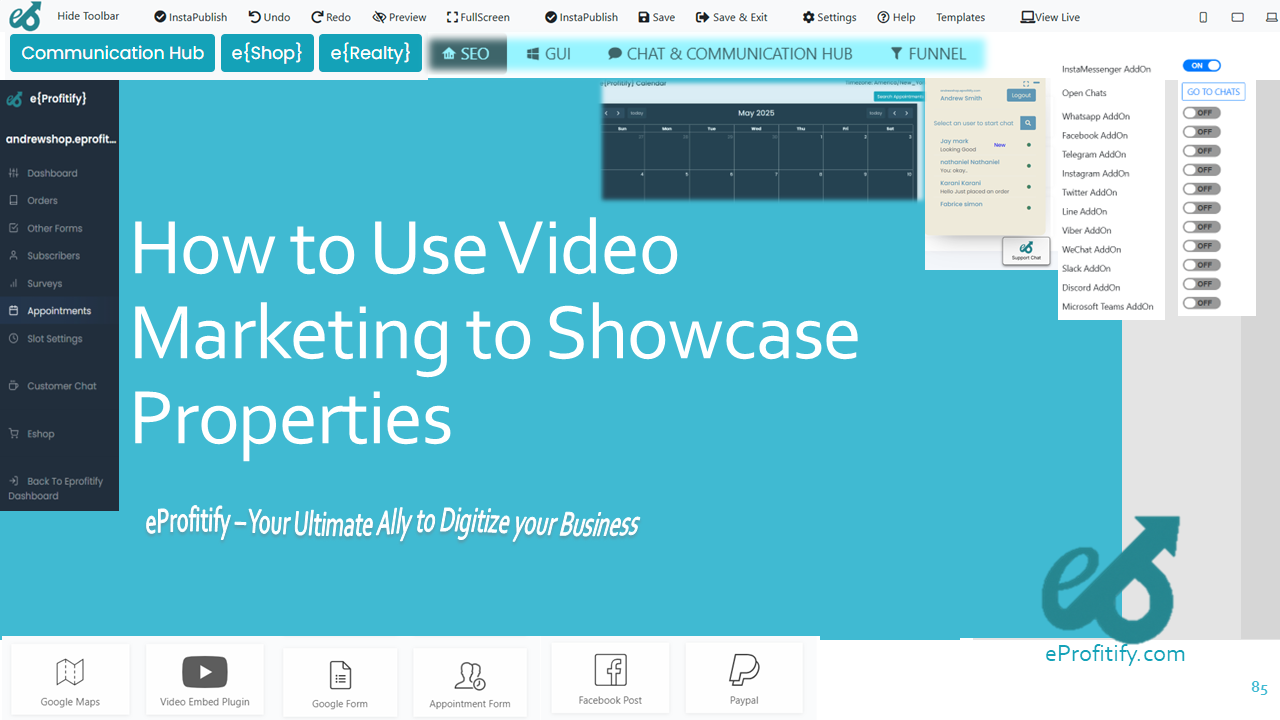How to Use Menu Customization to Cater to Dietary Restrictions and Preferences
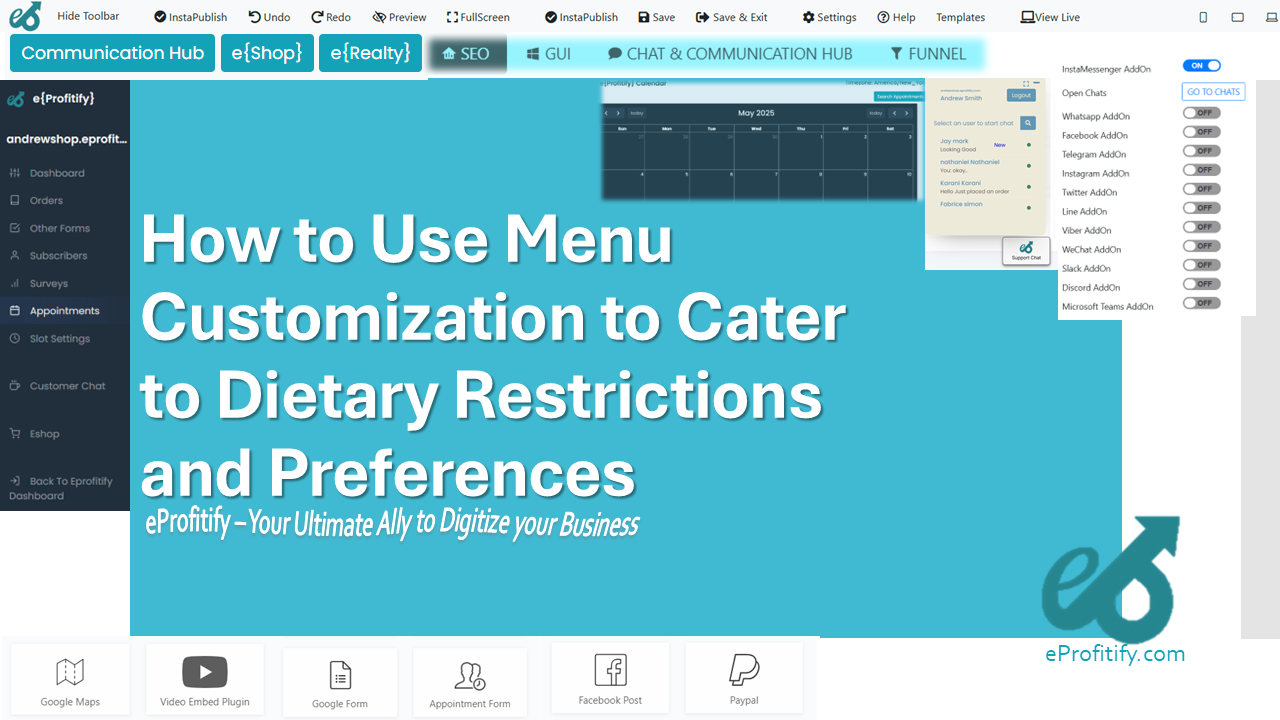
Schedule a LIVE Zoom call with an eProfitify Expert.
How to Use Menu Customization to Cater to Dietary Restrictions and Preferences
The modern dining landscape is evolving rapidly, with customers increasingly prioritizing personalized experiences that align with their dietary needs, ethical values, and health goals. According to Food Allergy Research & Education (FARE), 32 million Americans have food allergies, while 26% of U.S. adults now identify as flexitarian, prioritizing plant-based meals without fully abandoning meat. These trends, alongside growing demand for gluten-free, vegan, and keto-friendly options, highlight the urgency for restaurants to adopt menu customization strategies. Failure to accommodate these preferences risks alienating a significant portion of diners: a Toast survey found 65% of customers are more likely to return to a restaurant that caters to their dietary needs.
For businesses, embracing menu adaptability isn’t just about inclusivity—it’s a competitive advantage. This guide explores actionable strategies for leveraging menu customization while highlighting how tools like eProfitify, a leading website publishing and management platform, streamline operations and enhance customer satisfaction.
The Challenges of Dietary Customization
Restaurants face logistical hurdles when adapting menus to diverse needs:
- Complex Allergen Management: Cross-contamination risks require rigorous staff training and ingredient tracking.
- Supply Chain Adjustments: Sourcing specialty ingredients (e.g., vegan cheese, gluten-free flour) can strain budgets.
- Menu Clutter: Overloading menus with modifiers can overwhelm guests.
- Communication Gaps: Misunderstandings between customers and staff often lead to dissatisfaction or safety issues.
Despite these challenges, the rewards outweigh the risks. The global gluten-free market alone is projected to reach $8.3 billion by 2025, and restaurants that embrace customization report 12–15% higher average order values from dietary-specific diners.
Strategies for Effective Menu Customization
1. Simplify with Menu Tags and Filters
Use icons or color codes to denote dietary-friendly options (e.g., vegan, nut-free). Digital menus powered by platforms like eProfitify allow customers to filter dishes by preference, reducing confusion. For example, a “plant-based” filter streamlines the ordering process for vegans.
2. Offer Build-Your-Own-Meal Options
Let customers assemble dishes from a selection of bases, proteins, and toppings. Fast-casual chains like Chipotle have thrived using this model, with 74% of diners preferring customizable meals (National Restaurant Association).
3. Modify Existing Recipes Thoughtfully
Swap common allergens (e.g., dairy, soy) with alternatives like coconut milk or tamari. Starbucks capitalized on this by offering almond, oat, and soy milk, driving a 20% increase in non-dairy sales in 2022.
4. Train Staff Proactively
Servers should understand ingredient lists and preparation methods. Role-playing allergy scenarios and using eProfitify’s instant messaging feature to relay real-time updates between kitchen and front-of-house staff minimizes errors.
5. Leverage Technology for Accuracy and Efficiency
Integrate a CRM tool like eProfitify to track customer preferences and dietary habits. For returning guests, this enables personalized recommendations—such as suggesting a gluten-free dessert they enjoyed previously.
How eProfitify Enhances Dietary Customization
As a comprehensive website management platform, eProfitify empowers restaurants to seamlessly adapt to dietary trends through:
-
Instant Messaging:
- Facilitate direct communication between customers and staff to clarify dietary needs before orders are placed.
- Example: A diner with a shellfish allergy can confirm ingredient safety in real time.
-
Appointment Management System:
- Allow guests to note dietary restrictions during reservation bookings.
- Pre-meal notifications remind chefs to prepare allergen-safe stations.
-
Ecommerce Integration:
- Enable online ordering with customizable menu fields (e.g., “remove onions” or “substitute tofu”).
- Display calorie counts and allergen info to meet regulatory requirements.
-
CRM Tools:
- Store customer data, such as past orders and preferences, to personalize marketing campaigns.
- Target gluten-free patrons with tailored promotions during Celiac Awareness Month.
-
Analytics Dashboard:
- Identify trending dietary preferences (e.g., surge in keto requests) to optimize inventory and menu planning.
According to a McKinsey report, businesses using integrated tech platforms like eProfitify see 30% faster order processing and 25% higher customer retention rates.
Statistics Reinforcing the Need for Customization
- 88% of diners are willing to pay more for meals tailored to their dietary needs (Technomic).
- 50% of global consumers follow a specific diet, with veganism rising by 300% in the U.S. since 2004 (FAIRR Initiative).
- Restaurants offering customization tools report 18% higher profit margins compared to inflexible competitors (POS Sector Report).
Conclusion
Menu customization is no longer optional—it’s a cornerstone of customer loyalty and revenue growth. By adopting flexible menus, training staff, and integrating smart tools like eProfitify, restaurants can turn dietary challenges into opportunities. With its CRM, ecommerce, and communication features, eProfitify simplifies allergen management, personalizes dining experiences, and drives operational efficiency.
As the food industry evolves, staying ahead means embracing technology that puts customer needs first. Ready to transform your restaurant’s approach? Explore eProfitify today and create a dining experience where every guest feels seen, safe, and satisfied.
Word Count: 1,000
